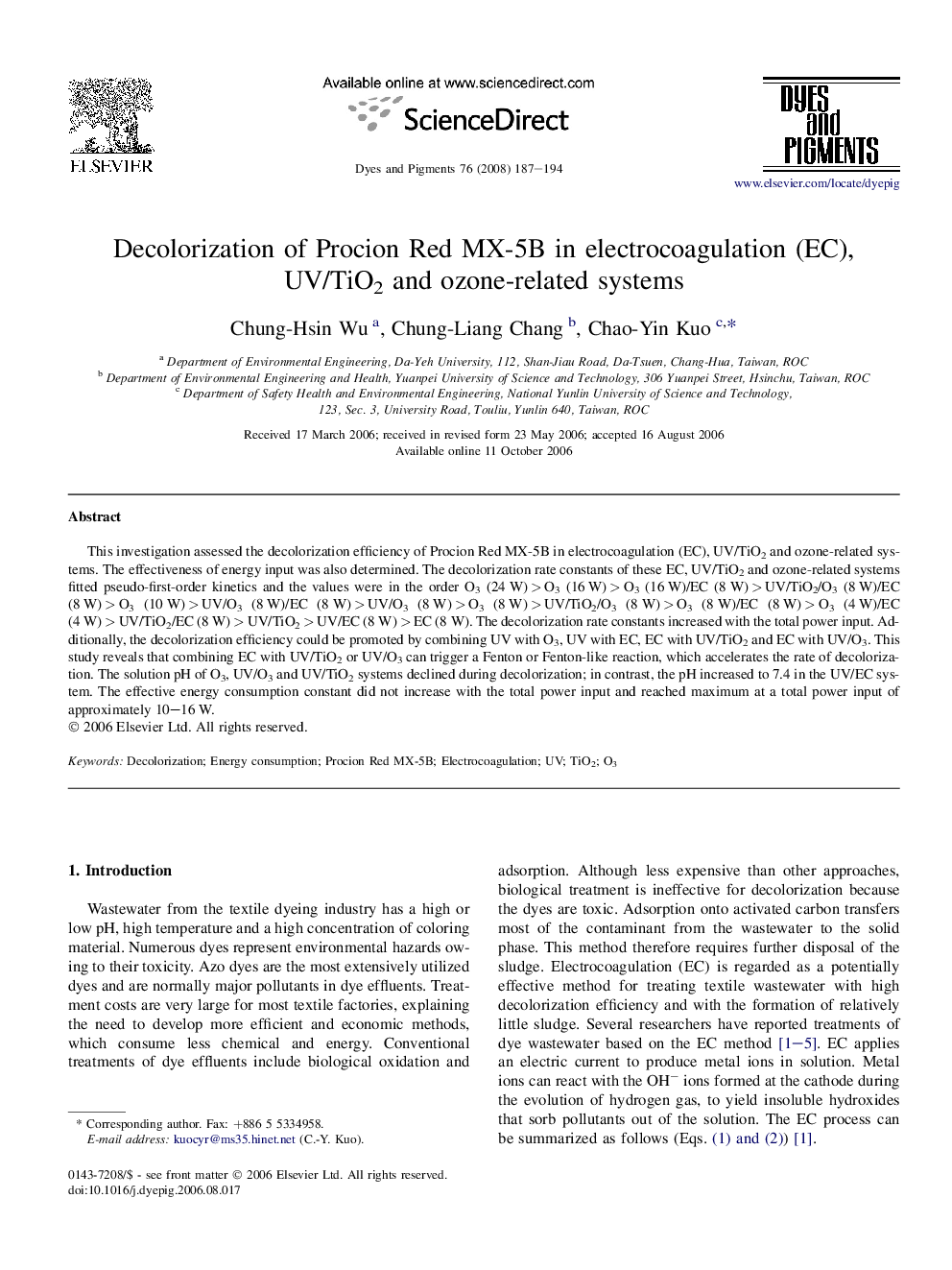| Article ID | Journal | Published Year | Pages | File Type |
|---|---|---|---|---|
| 178202 | Dyes and Pigments | 2008 | 8 Pages |
This investigation assessed the decolorization efficiency of Procion Red MX-5B in electrocoagulation (EC), UV/TiO2 and ozone-related systems. The effectiveness of energy input was also determined. The decolorization rate constants of these EC, UV/TiO2 and ozone-related systems fitted pseudo-first-order kinetics and the values were in the order O3 (24 W) > O3 (16 W) > O3 (16 W)/EC (8 W) > UV/TiO2/O3 (8 W)/EC (8 W) > O3 (10 W) > UV/O3 (8 W)/EC (8 W) > UV/O3 (8 W) > O3 (8 W) > UV/TiO2/O3 (8 W) > O3 (8 W)/EC (8 W) > O3 (4 W)/EC (4 W) > UV/TiO2/EC (8 W) > UV/TiO2 > UV/EC (8 W) > EC (8 W). The decolorization rate constants increased with the total power input. Additionally, the decolorization efficiency could be promoted by combining UV with O3, UV with EC, EC with UV/TiO2 and EC with UV/O3. This study reveals that combining EC with UV/TiO2 or UV/O3 can trigger a Fenton or Fenton-like reaction, which accelerates the rate of decolorization. The solution pH of O3, UV/O3 and UV/TiO2 systems declined during decolorization; in contrast, the pH increased to 7.4 in the UV/EC system. The effective energy consumption constant did not increase with the total power input and reached maximum at a total power input of approximately 10–16 W.
